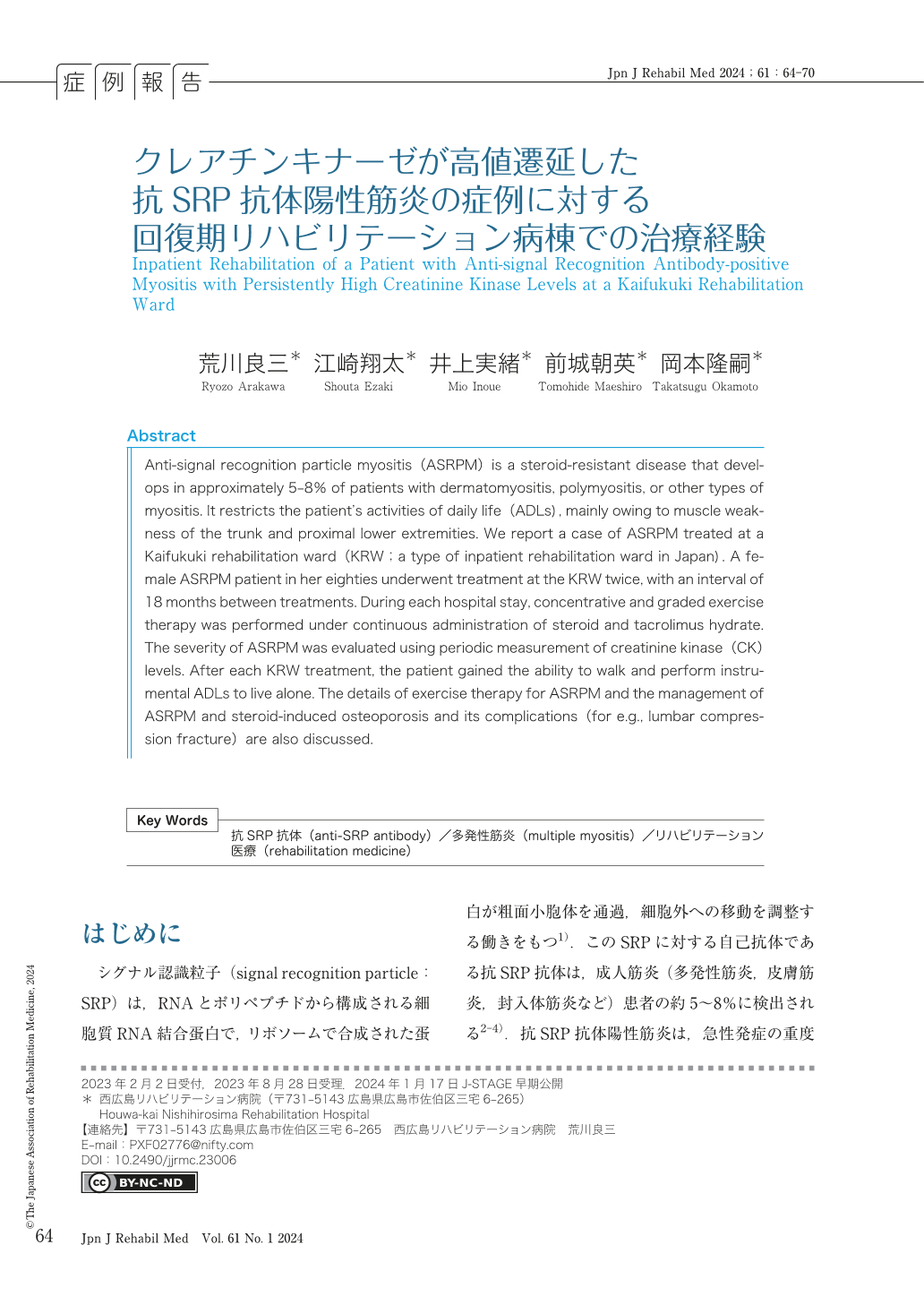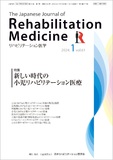Japanese
English
- 販売していません
- Abstract 文献概要
- 1ページ目 Look Inside
- 参考文献 Reference
はじめに
シグナル認識粒子(signal recognition particle:SRP)は,RNAとポリペプチドから構成される細胞質RNA結合蛋白で,リボソームで合成された蛋白が粗面小胞体を通過,細胞外への移動を調整する働きをもつ1).このSRPに対する自己抗体である抗SRP抗体は,成人筋炎(多発性筋炎,皮膚筋炎,封入体筋炎など)患者の約5〜8%に検出される2-4).抗SRP抗体陽性筋炎は,急性発症の重度筋炎症状を認め,また,ステロイド抵抗性で再燃増悪し,日常生活が制限されることが多い4, 5).今回,クレアチンキナーゼ(creatine kinase:CK)が高値遷延した抗SRP抗体陽性筋炎症例を経験した.定期的にCK値を測定し,運動負荷量を調整しながら積極的な運動療法を行い,CK値が増悪することなく経過し改善を得た.抗SRP抗体陽性筋炎患者に対する回復期リハビリテーション病棟からの報告は過去になく,考察を加えて報告する.
なお,本研究は所属施設倫理委員会の承認を得て行われており(承認日2021年1月7日,NO. 10043-3),発表に際し説明を行い,書面にて同意を得た.
Abstract Anti-signal recognition particle myositis (ASRPM) is a steroid-resistant disease that develops in approximately 5-8% of patients with dermatomyositis, polymyositis, or other types of myositis. It restricts the patient's activities of daily life (ADLs), mainly owing to muscle weakness of the trunk and proximal lower extremities. We report a case of ASRPM treated at a Kaifukuki rehabilitation ward (KRW;a type of inpatient rehabilitation ward in Japan). A female ASRPM patient in her eighties underwent treatment at the KRW twice, with an interval of 18 months between treatments. During each hospital stay, concentrative and graded exercise therapy was performed under continuous administration of steroid and tacrolimus hydrate. The severity of ASRPM was evaluated using periodic measurement of creatinine kinase (CK) levels. After each KRW treatment, the patient gained the ability to walk and perform instrumental ADLs to live alone. The details of exercise therapy for ASRPM and the management of ASRPM and steroid-induced osteoporosis and its complications (for e.g., lumbar compression fracture) are also discussed.

Copyright © 2024, The Japanese Association of Rehabilitation Medicine. All rights reserved.


